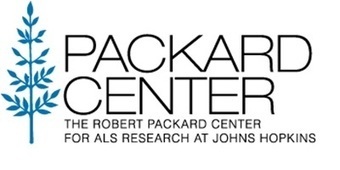Via Scoop.it – ALS Lou Gehrig’s Disease
 It was a meeting of the minds. On March 8th, 9th, and 10th, Packard Center grantees gathered at the Baltimore Marriott Waterfront to present and discuss their research findings from the past year. Unlike previous years, the symposium’s format integrated bench science with clinical research findings. As Packard Science Director Piera Pasinelli noted at the start of the first day, lab results and clinical trials inform each other. When each perspective learns from the other, Pasinelli said, scientists will move more quickly towards finding promising therapeutic targets to develop into drugs for ALS. “The goal of Packard has always been to bring new discoveries forward and closer to the clinic as quickly as possible,” said Pasinelli. “By encouraging these partnerships and exchange of ideas between clinicians and bench scientists, we want to take the most promising scientific ideas to the attention of the clinicians faster. Because basic and clinical science inform each other, this exchange is also beneficial to refine strategies in the lab and in the clinic.” Perhaps the most significant breakthrough in ALS science in the past year has been the discovery of the repeat expansion on chromosome 9. Known as C9ORF72, it was co-discovered by Packard Scientist Bryan Traynor and is the most common genetic cause of familial ALS in North America. The identification of hundreds of copies of a repeating six DNA base pair sequence was a milestone, but like many important scientific discoveries, it raised more questions than it answered.
It was a meeting of the minds. On March 8th, 9th, and 10th, Packard Center grantees gathered at the Baltimore Marriott Waterfront to present and discuss their research findings from the past year. Unlike previous years, the symposium’s format integrated bench science with clinical research findings. As Packard Science Director Piera Pasinelli noted at the start of the first day, lab results and clinical trials inform each other. When each perspective learns from the other, Pasinelli said, scientists will move more quickly towards finding promising therapeutic targets to develop into drugs for ALS. “The goal of Packard has always been to bring new discoveries forward and closer to the clinic as quickly as possible,” said Pasinelli. “By encouraging these partnerships and exchange of ideas between clinicians and bench scientists, we want to take the most promising scientific ideas to the attention of the clinicians faster. Because basic and clinical science inform each other, this exchange is also beneficial to refine strategies in the lab and in the clinic.” Perhaps the most significant breakthrough in ALS science in the past year has been the discovery of the repeat expansion on chromosome 9. Known as C9ORF72, it was co-discovered by Packard Scientist Bryan Traynor and is the most common genetic cause of familial ALS in North America. The identification of hundreds of copies of a repeating six DNA base pair sequence was a milestone, but like many important scientific discoveries, it raised more questions than it answered.
Via www.alscenter.org

